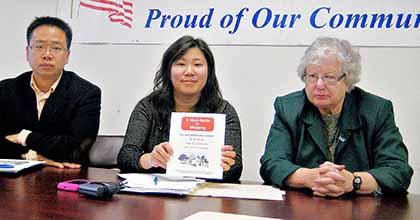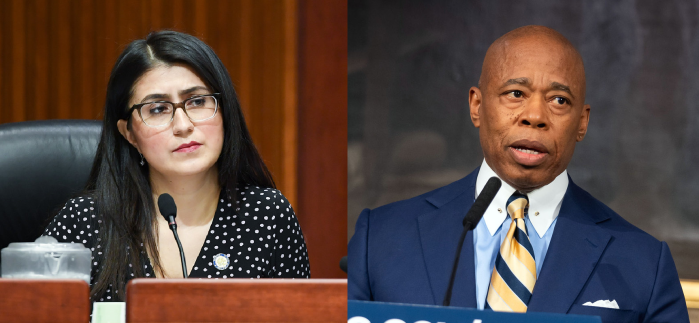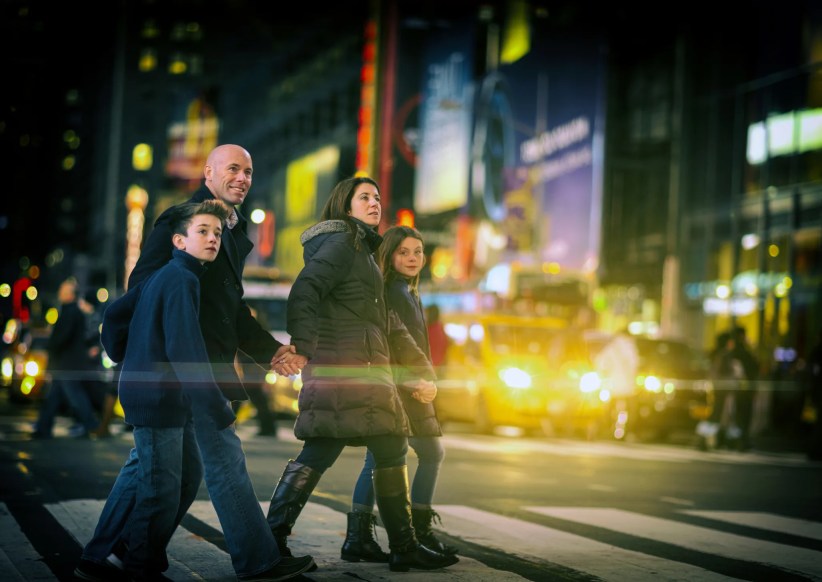By Connor Adams Sheets
The contentious debate over what to do about downtown Flushing businesses that do not have signs in English flared up again last week.
An advisory board formed last year by state Assemblywoman Grace Meng (D-Flushing) to address the topic met Friday to speak with representatives of city agencies and discuss ideas for how to encourage or require business owners to add English writing to their signs.
But the meeting quickly devolved into an argument about differing visions of the Flushing that residents and officials want to see.
Meng was joined by state Sen. Toby Stavisky (D-Whitestone) in her view that encouraging the use of English signage is one of a number of important steps necessary to foster a welcome atmosphere for shoppers and proprietors in downtown Flushing.
“The best way for this to succeed is for business owners to do this voluntarily …. The last thing we want is to harm our businesses in Flushing, to slow our economy,” Meng said. “Just because there’s a law on the books doesn’t mean people will follow it. This is why we started these meetings. We wanted to improve goodwill here in Flushing.”
But goodwill was simply not good enough for four white advisory board members who said they wanted a law to require that English be the main language on all signs in Flushing — and across the city. The board has about 15 members representing a range of ethnicities.
James Trikas, a community leader and board member, said addresses and store names must be in English in order to ensure safety when firefighters and police officers need to find a specific store and that English should be the official language in the United States.
“I want the English language as the predominant language on all signs. We don’t have a problem with second languages — we want second languages — we just want the English lettering to be the largest, even if it’s just an eighth of an inch bigger,” Trikas said. “The real problem is the perception it implies, which is that they only cater to their own. They want to dominate the area and not recognize the English language.”
Ikwhan Rim, co-president of the Union Street Merchants Association, countered Trikas’ accusation, saying that among store owners the will is there, but the way still has to be hashed out.
“We want to have uniform signs, we want to have English signs, but it takes a lot. We can’t do it overnight. We need money to do this, but we are trying to do this,” he said.
Trikas, who said he has collected more than 1,250 petition signatures supporting his cause, and three other board members said they thought that political leaders were not moving fast enough to create laws or otherwise address the signage issue.
But Meng reiterated that the board has only been in existence for less than a year and it is working to find a solution to an issue that has dragged on for decades. She said she, Stavisky and other leaders are working with the city to see what the current law is and which agency enforces it.
The city has a law on the books that requires English signs on all storefronts, but Claudia Filomena, co-director of the mayor’s Community Affairs Unit for Northeast Queens, said it needs clarification.
“As far as doing this type of enforcement, it’s not really clear which of the city agencies would do that,” she said. “I think this would require interpretation by the city Law Department.”
Meng and Stavisky said they hope to clarify the existing law and continue working toward a solution before the group’s next meeting.
Reach reporter Connor Adams Sheets by e-mail at csheets@cnglocal.com or by phone at 718-260-4538.


































